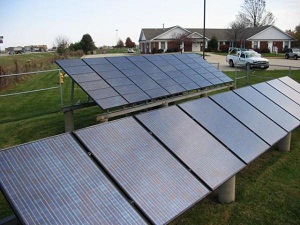Reviewing last week's solar energy news
 Last week was a hodgepodge of solar news, with things going on in all sectors, from large scale to local scale, national to international.
Last week was a hodgepodge of solar news, with things going on in all sectors, from large scale to local scale, national to international.
The U.S. International Trade Commission’s (ITC’s) decision to move forward on its investigation into the trade practices of Chinese solar manufacturers may have the biggest impact on the U.S. solar industry. The case, brought by the Coalition for American Solar Manufacturing (CASM) and SolarWorld Americas Inc. is being opposed by another U.S. trade group, Coalition for Affordable Solar Energy (CASE). The latter alleged that CASM’s petition for the investigation smacks of protectionism and that imposing tariffs on cheap Chinese imports would force U.S. projects to not move forward, which would cost jobs.
Meanwhile, proof that competition is fierce in the solar industry is growing. For instance, the number of solar companies in the Ardour Solar Energy Index (SOLRX) dropped below 30 for the first time since its inception in 2006. The index covers the largest solar companies in the world, primarily manufacturers, but also some vertically integrated companies like SunPower, that meet certain criteria.
That news doesn’t seem to affect the spread of large solar projects. For instance, SolarStrong, an effort to put solar on up to 120,000 military housing units across the country, is forging ahead, despite failing to complete loan guarantee requirements prior to the expiration of the program. The $1 billion project, a collaboration between SolarCity, U.S. Renewables Group Renewable Finance and Bank of America Merrill Lynch, will now go forward. Up to 300 megawatts of solar cold be installed through the project over the next five years.
News of U.S. solar projects over 100 megawatts in size were almost exclusively in the Southwest, but not anymore. Thanks to National Solar Power, Florida is now seeing its share of huge photovoltaic plants, with the announcement that it will build a 200-megawatt solar farm in Hardee County, Fla. That’s following an earlier announcement of a 400-megawatt plant in Gadsden County, Fla.
The demand for solar across the U.S. is growing as well. Though Kentucky is not synonymous with solar, demand, at least in Berea, is strong. Berea Municipal Utilities (BMU) recently offered its customers a chance to get in on a community solar farm. It was fully subscribed within four days. That spurred the municipal utility to offer a second phase, which closed last week.
Another municipal utility, Austin Energy, is finalizing its plans for adding in up to 200 megawatts of solar to meet its goal of 35 percent renewables by 2020. At this point, the utility has not determined definitively how it will add that much solar in over the next nine years. It is looking into funding mechanisms like power-purchase agreements and will choose what works best.
Massachusetts recently launched its Clean Energy Results Program. Under the program the state is evaluating landfill sites for potential new solar installations. It wants to add 50 megawatts of photovoltaics at such sites as part of its larger goal of 400 installed megawatts of solar by 2020.
Image courtesy of the National Solar Tour.



